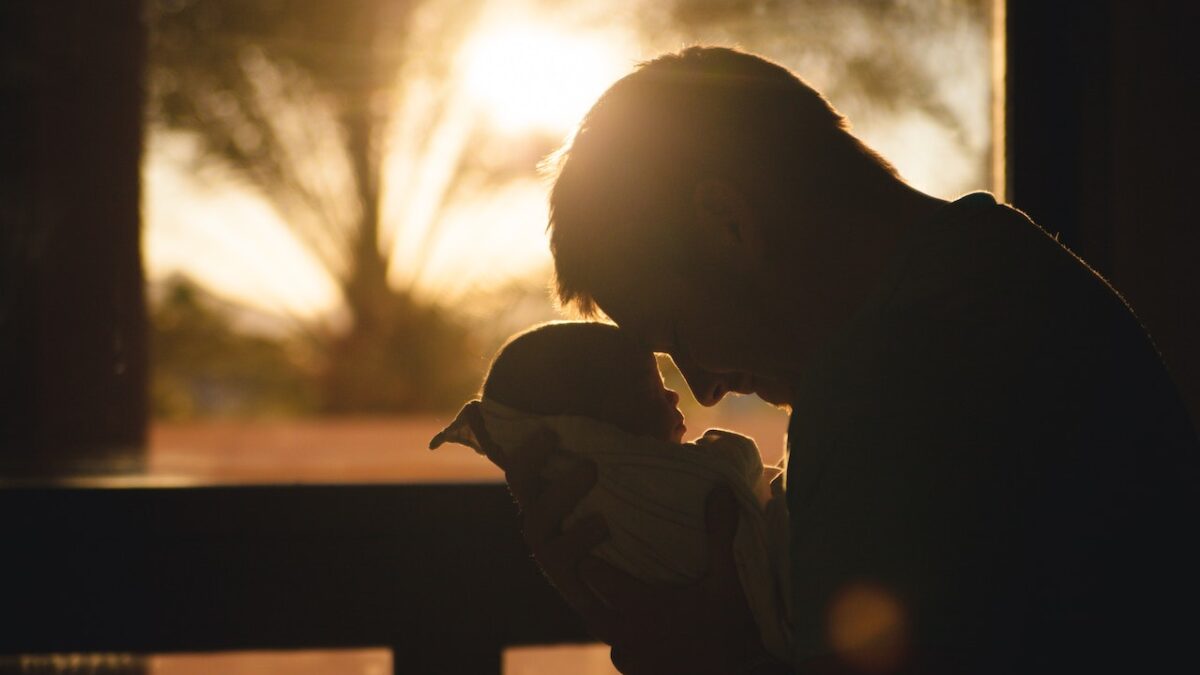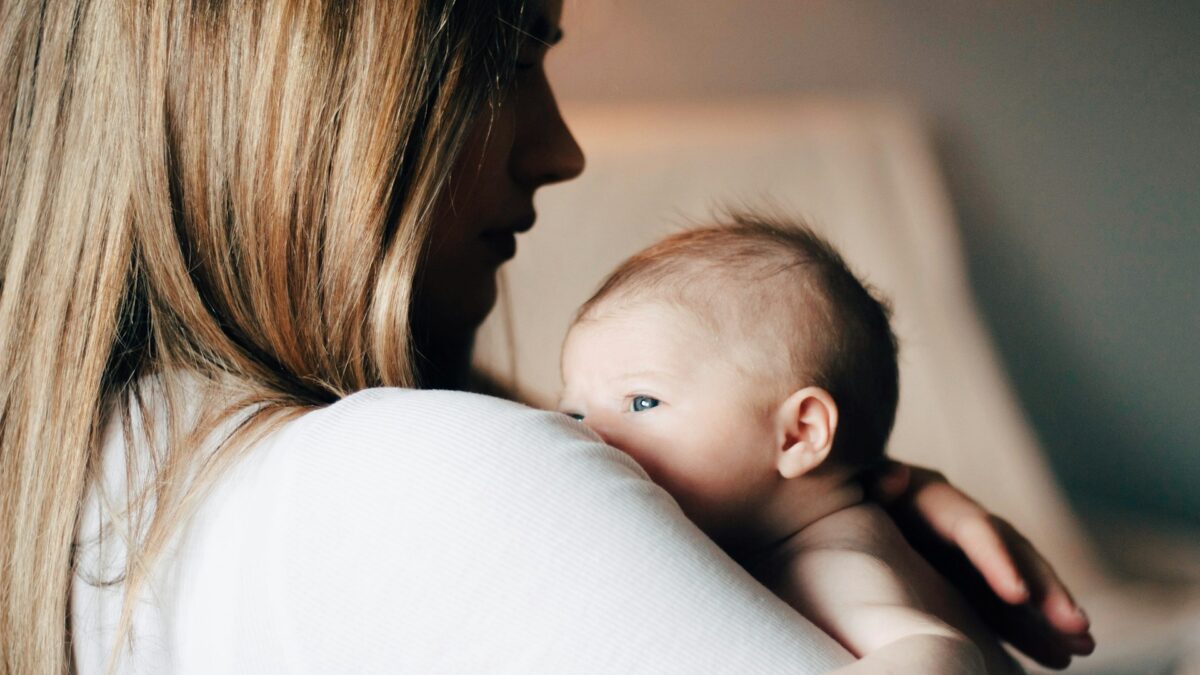As the nation reacts to the overturning of Roe v. Wade, we’ve seen an increase in abortion proponents citing the struggles of the foster care system as a justification for ending the lives of the unborn.
As someone whose family has been shaped and even added to by the foster system, it hurts to see abortion activists make the case that a child like my father, who was raised in foster care, or my brothers, who were adopted from foster care, should have been aborted instead of making their way through an imperfect, but a life-affirming system.
November is National Adoption Month, a good occasion to sit down with Herbie Newell, president and executive director of Lifeline Children’s Services, the largest evangelical Christian adoption agency in the country. I invited Newell to address common misconceptions about adoption, foster care, and the choice to preserve life when parenting is not in the best interests of the child and the birth parents.
Alison Centofante: What should the conversation on adoption and foster care be centered on?
Herbie Newell: We must recognize that adoption and foster care can be difficult options, but difficulty need not invalidate them as viable and healthy choices. We must recognize that life is always a good thing, even through the hard, messy, and mundane. We must change how we think about unborn life — not as an inconvenience but as an opportunity.
Women who choose adoption are some of the strongest women in the world, and they are making one of the most courageous decisions of their lives. We need to honor these women and support them holistically.
Families separated for any reason by the need for foster care also suffer. We must not victimize nor condemn these families for their brokenness but support them while protecting their children.
Our aim is and always ought to be to compel families, women, and children to understand the beauty, joy, and abundance of life. Yes, there’s sorrow and pain in life because we live in a fallen world. Women and children hurt. Mothers make difficult and life-altering decisions due to unexpected pregnancies; however, these difficult experiences are always better than death.
If we are going to be a pro-family, pro-child, pro-parent, and pro-life culture, we should ensure children and parents can stay together when possible. And when it’s not possible, we must support the formation of stable, loving, and caring families within our communities.
AC: Let’s talk about adoption. Many people have the desire to adopt one day but are concerned about the cost. Why is adoption so expensive? Some believe it costs a family upwards of $30,000 to adopt a child. Is that true? Are there ways to bring that cost down?
HN: This anxiety is common and legitimate. What those concerned about cost need to know is that there is help to be found. The average American taxpayer qualifies for roughly $15,000 in total tax incentives for adoption. When paired with grants and community support, this makes adoption much more affordable.
While I don’t want to be dismissive about the high cost of adoption, I do want to note that giving birth to a biological child in a hospital is also extremely expensive; however, most families have insurance, so they don’t ever bear the full cost of prenatal care, a live birth, or subsequent pediatric care. We’re used to insurance companies picking up the majority of the bill.
While there is no adoption insurance, and adoption does come with medical costs, the cost of the judicial process of adoption, and the cost to care for and support a birth mom, adoptive families do not have to face those costs alone. At Lifeline, we ensure birth parents are provided with prenatal visits, counseling costs, tangible support, and the cost of the birth.
Prospective adoptive parents may not have insurance support as in typical pregnancy, but they do have potential support from many organizations that have funds waiting to grant to adoptive parents. These organizations are actively seeking families to whom they can offer financial support to make adoption possible.
AC: I and many others used to think adoption was either totally open or totally closed, meaning a birth mother would have to choose between seeing her child whenever she wanted or never. Is there more flexibility in creating an adoption plan now? Can a birth mother customize her adoption plan?
HN: Creating an adoption plan allows much flexibility and many choices for birth mothers. Adoptive families are more willing than ever to accept a degree of openness in adoption chosen by birth parents. This is a major difference today from even 10-15 years ago. Most families understand that adoption is not just about providing a child with a family but is also about supporting that mother.
Families are realizing that closed adoptions are not optimal in helping their children know family medical histories nor in aiding a child in their future desire for reunion with birth families.
The odds are high that there will be a reunion at some point with your child’s birth parent, and it’s important to understand that your call to love and have a relationship with your child’s biological mother is a strong part of your child’s story.
The level of true openness remains entirely the choice of women placing their children for adoption, and we need to be respectful of and sensitive to their needs. Many times it may be too emotionally challenging for some women to maintain consistent or open contact, and it is their right to choose.
AC: Do many women in unplanned pregnancies choose adoption? The Washington Post recently ran a piece titled, “Women denied abortion rarely choose adoption.” What are you seeing? How can we change that?
HN: No matter what a woman chooses — abortion or adoption — she will think about her child daily for the rest of her life. The decision involved is whether she will mourn the opportunities her child missed by not being given the chance at life, or dream about who they’re becoming as a toddler, teen, and adult. This is a crucial distinction.
In both circumstances, women end up childless. Yet one path leads to death while the other leads to hope. The way pro-abortionists talk about the future afforded to women by abortion shows how seriously they misrepresent this heinous process. Abortion advocates frame the decision to abort as a “reproductive” choice, as opposed to a “parenting” choice.
You make a reproductive decision when you choose to have sex and potentially become a parent. You are making a parenting decision from the moment a child is alive in the womb as a result of those reproductive choices. This is true on a deep and immutable biological level. A woman’s body has been hormonally transformed for days or weeks before she’s likely to suspect pregnancy.
Of course, so many women choose abortion anyway because they’re afraid. It’s faster and seems easier to choose abortion than to carry a pregnancy to term. Planned Parenthood and other pro-abortionists aren’t interested in supporting or educating women, but in abortion at all costs.
AC: We often hear from the pro-abortion movement, “but these kids will end up in foster care,” as a justification for abortion. What is your response?
HN: No one knows what tomorrow will bring. I have a friend in his 80s who was told a year and a half ago that he had two months to live. However, today he’s playing tennis and his cancer is regressing. No one can know the future.
We build straw-man visions of the future and make life-and-death decisions based on our fear and despair in the present moment. Refusing life, for this reason, is presumptuous and extreme.
I am confident that we can take care of these precious children. It is an immense responsibility, both for us as Americans and for the many foster and adoptive families who get involved. But we are up to the task. And it’s a noble task, one we should cherish, celebrate, and proactively support. The Gospel of Jesus Christ also informs me to defend life so that ultimately men, women, boys, and girls can know salvation through Christ Jesus and ultimately abundant life.
AC: Are there enough adoptive families for the children born in a post-Roe world?
HN: Yes, most experts conservatively estimate 2 million American families are waiting to adopt, which is 36 families to every child who’s placed for adoption.
This may be a surprising number to those outside the adoption community. If we encouraged women to choose adoption instead of abortion and supported adoption as a process of caring for vulnerable children, I believe that we would see many more families come forward to adopt. These 2 million waiting families are just a baseline, a minimum.
The problem isn’t the number of available homes for children. It’s limitations in education about the process for vulnerable mothers and for adoptive families. We must support these women, children, and families in navigating the existing systems.
AC: Can you explain the goal of foster care?
HN: The goal of the U.S. foster care system was meant to protect children while providing temporary support to their families in order to achieve reunification.
The foster care system in its current state cannot rehabilitate families. This is why we need our churches and faith communities to support widows and orphans, as we are called to do by God. We need to take responsibility for these struggling families and help rehabilitate them.
The progression of foster care should be family preservation first, then family restoration, and then — only if both of these earlier efforts fail — adoption.
AC: We’ve all heard stories of abuse, and we know kids with trauma sometimes struggle to integrate into their adoptive or foster families. Are there ways to protect both foster children and your biological children from abuse?
HN: Many times, the system ends up looking for ways to get families into the foster care pipeline as quickly as possible. And while we need more foster families, we also need to make sure we’re adequately training them and assessing the needs of the children they can handle in their homes.
Because of the hurt and trauma many of our youth in foster care have endured, they have suffered greatly at young ages. Many times suffering people inadvertently hurt other people, and it’s essential that foster parents understand what to expect and how to minister properly to the children in their care who have experienced suffering and loss. Foster families not only need more training and support, but they desperately need a community of care. This is a great place for our churches to step in.
We also need to consider the makeup of the family being considered for foster care placements. Birth order can be really important in already-established families, as can the gender of the children. Kids with serious trauma might need to be around other kids of the same gender, and some might need to be the youngest child.
AC: I know a lot of people admire foster care and adoption but are hesitant to jump in fully as foster parents or to adopt a child. Are there small steps one can take to learn more? Or ways to support foster care parents or adoptive families?
HN: Lifeline has extensive church-based programming aimed at providing wraparound, community-driven services to support all of those involved. It is vital that we are not only encouraging families to foster or adopt but that we are also supporting the families who choose to do so.
Families Count is one program that equips churches to teach the state-mandated parenting class to families seeking to reunify with their children in foster care. Church members not only provide training but also mentor these families while connecting them to a community of support through their local church. We are seeing staggering results through families across 13 states.
Heritage Builders is another program aimed at empowering church members to minister to and guide foster youth who might otherwise face a difficult and lonely exit from the foster system. It’s a great way for every single church to help the estimated 23,000 children who age out of the system every year and provide them with critical life readiness skills they just wouldn’t get otherwise
We need families committed to praying for and resourcing foster families however they are able. People of all ages can help kids in care feel welcome in their new homes. Children in children’s ministries who help foster kids feel welcome at church are indispensable for social and emotional support. Senior adult ministries can welcome new children through the integral role of grandparents. We need people doing even the seemingly small things because these are the vital things.
AC: How can pro-life Americans improve how to talk about adoption and foster care?
HN: First, language matters. Pro-abortion lobbies have co-opted positive language for abortion like “reproductive choice” and “reproductive justice,” while pro-life Americans have gotten in a bad habit of using negative terminology like saying “giving up your baby for adoption.” We must use language that more accurately describes the beautiful choice of “creating an adoption plan.”
We also need to be humble, available, and ready to support the women in our sphere of influence. We cannot support the woman across town well if we aren’t living authentic pro-life ministry in our homes, neighborhoods, and churches. It’s essential that we vote to defend life because abortion has been placed back on the legislative branch where it should be, meaning local and state elections should have a greater importance.
While politics are crucial and remain so, we must also make sure that we are genuinely and actively living out our convictions to care for the woman next door, to promote abstinence, to teach our children God’s plan and values for sex, and to love the orphan and vulnerable child here and around the world.
Lastly, we must be affirming of adoption as a safe and responsible choice for women facing crises and unplanned pregnancies.









